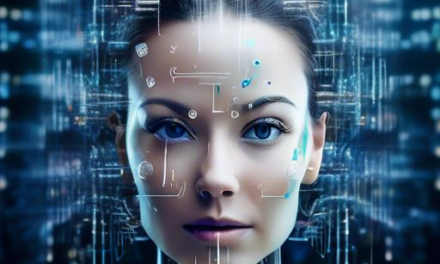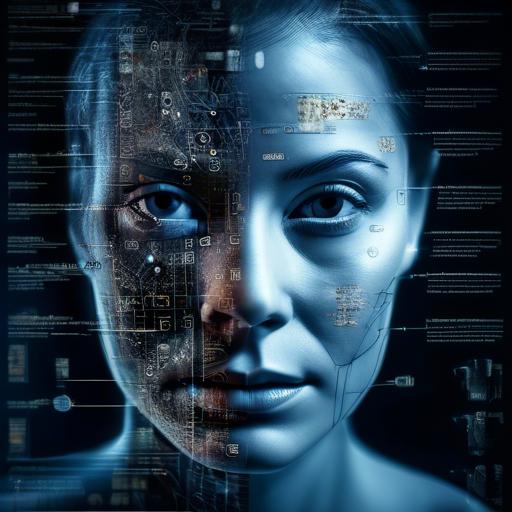In the vast expanse of the cosmos, constellations of data twinkle and beckon to the curious minds of scientists. For centuries, humankind has endeavored to decode the mysteries of our universe, peering through lenses and scrutinizing the minuscule and the cosmic alike. Yet, as the frontiers of knowledge expand, so too must our tools of exploration. Enter artificial intelligence—the avant-garde artist and analyst of the digital age. With an uncanny ability to sift through mountains of data and reveal hidden patterns, AI is revolutionizing the realm of scientific imaging. In this marvel of modern science, imagination and technology meld, ushering in an era where the unseen becomes visible and the unknown, a little more familiar. Welcome to the world where pixels and algorithms paint a new portrait of discovery, all guided by the intuitive hand of AI.
Table of Contents
- Revolutionizing Research: How AI is Transforming Scientific Imaging
- Decoding Images: The Role of Machine Learning in Data Interpretation
- Enhanced Precision: Leveraging AI for Accurate Image Analysis
- Automating the Future: Reducing Human Error with AI-Driven Tools
- Real-Time Revelations: AIs Impact on Live Imaging Techniques
- Beyond the Visible: AI and Advanced Spectroscopy for Hidden Insights
- Tailored Solutions: Customizing AI Models to Fit Specific Research Needs
- Ethics and AI: Balancing Innovation with Responsible Use
- In Summary
Revolutionizing Research: How AI is Transforming Scientific Imaging
Researchers and scientists have long relied on powerful imaging techniques to explore the intricacies of the natural world, from intricate cell structures to expansive cosmic phenomena. Enter Artificial Intelligence (AI), a game-changer that is elevating the capabilities and quality of scientific imaging to unprecedented levels. AI algorithms excel at processing and interpreting vast amounts of data, enabling researchers to uncover insights that were hidden in plain sight.
Traditional imaging techniques, such as MRI and X-ray, generate volumes of complex data. Sorting through this data manually can be both time-consuming and prone to errors. AI-driven tools, equipped with deep learning capabilities, can now analyze images with remarkable speed and accuracy. Imagine an AI algorithm detecting early signs of diseases from medical scans, long before they become clinically apparent. This means early interventions and potentially life-saving treatments.
**Key Benefits of AI in Scientific Imaging:**
- Enhanced Accuracy: AI minimizes human error by consistently identifying anomalies and patterns.
- Time Efficiency: Tasks that previously took hours or days can now be completed in minutes.
- Data Interpretation:** Speeds up the process of deriving meaningful insights from large datasets.
Further magnifying its utility, AI also enhances the quality and resolution of images. Techniques such as **super-resolution imaging** leverage AI to transform low-resolution images into high-definition counterparts, revealing details that were previously too minute to detect. This has groundbreaking implications across fields such as **astronomy**, where AI-enhanced images of distant galaxies could unravel new cosmic mysteries.
**Innovative Applications of AI in Imaging:**
| Field | AI Application |
|---|---|
| Medical Imaging | Early disease detection, predictive analytics |
| Astronomy | Super-resolution imaging of distant celestial objects |
| Molecular Biology | Advanced microscopy, protein structure prediction |
AI is not just a tool but an enabler of **innovation and discovery**. It empowers scientists to push the boundaries of what is possible, fostering a future where the mysteries of our universe are decoded with unprecedented precision and speed. As AI technology continues to evolve, its applications in scientific imaging will only become more profound and wide-reaching.
Decoding Images: The Role of Machine Learning in Data Interpretation
Machine learning has revolutionized the way we interpret scientific images, translating complex visual data into comprehensible insights with incredible precision. Once restricted to human analysis, scientific imaging now benefits immensely from the capabilities of artificial intelligence (AI). By recognizing patterns and anomalies invisible to the naked eye, these advanced algorithms are transforming fields such as biology, astronomy, and medical diagnostics.
Key advantages of employing machine learning in image analysis include:
- Speed and Efficiency: AI algorithms can process vast amounts of data in a fraction of the time it would take a human.
- Accuracy: AI reduces the margin for human error, increasing the reliability of the results.
- Automation: Routine tasks can be automated, freeing up scientists to focus on more complex research.
Consider an ongoing study in astrophysics where thousands of celestial images need to be analyzed. Previously, detecting phenomena like exoplanets involved tremendous manual effort. Today, machine learning models can sift through these images, identifying potential exoplanets with greater accuracy and speed, ultimately accelerating the pace of discovery.
In biology, AI technologies are invaluable for tasks like cell counting, identifying protein structures, and even predicting the 3D shapes of molecules. This not only enhances our understanding of biological processes but also aids in the development of new treatments and drugs. For instance, DeepMind’s AlphaFold offers groundbreaking predictions on protein folding, significantly impacting the field of structural biology.
Below is a glimpse into how machine learning aids in different scientific imaging applications:
| Field | Application |
|---|---|
| Astronomy | Exoplanet detection, galaxy classification |
| Biology | Cell counting, protein structure prediction |
| Medical Imaging | Tumor detection, radiology reports |
Enhanced Precision: Leveraging AI for Accurate Image Analysis
Artificial Intelligence is revolutionizing the field of scientific imaging, offering unparalleled precision that enhances research outcomes. Through cutting-edge algorithms and deep learning techniques, AI can scrutinize images with an accuracy far surpassing human capabilities. This allows scientists to focus on interpreting results rather than spending endless hours in manual analysis.
One of the pivotal advantages of AI in image analysis is its ability to detect minute details that are often overlooked by the naked eye. For instance, in medical imaging, AI can identify tiny anomalies in MRI and X-ray scans that might be missed by human radiologists. Similarly, in astronomical imaging, AI can locate distant celestial objects, unveiling secrets of the cosmos with remarkable detail.
- **Enhanced detection of cellular structures** in biological research
- **Refined analysis of geological formations** for environmental studies
- **Automated recognition of patterns** in climate data
Another standout feature is AI’s ability to learn and improve over time. Utilizing machine learning, these systems refine their image analysis capabilities with each new data set they process. This continuous learning loop ensures that the precision of AI-driven image analysis perpetually evolves, adapting to new challenges and enhancing accuracy even further.
| Application | AI Capability | Impact |
|---|---|---|
| Medical Imaging | Detect anomalies | Saves lives through early diagnosis |
| Astronomy | Identify celestial objects | Enhances understanding of the universe |
| Environmental Studies | Analyze geological formations | Informs conservation efforts |
Automating the Future: Reducing Human Error with AI-Driven Tools
Scientific imaging has long been a critical tool for researchers across various fields. However, traditional methods often rely heavily on human interpretation, which can be riddled with errors and inconsistencies. Enter **AI-driven tools**, which are transforming scientific imaging by introducing unprecedented accuracy, efficiency, and reliability.
These cutting-edge technologies offer multiple benefits:
- Enhanced Accuracy: AI algorithms can detect patterns and anomalies that might be overlooked by the human eye.
- Faster Processing: Automated tools can analyze large datasets much faster than manual methods.
- Consistency: AI provides standardization in image analysis, reducing variability and human error.
Within the realm of medical imaging, AI is a game-changer. Deep learning models can scrutinize MRI and CT scans to identify early signs of diseases, such as cancer or neurological disorders, potentially saving lives through earlier interventions. The following table showcases some AI tools and their applications:
| AI Tool | Application | Benefits |
|---|---|---|
| DeepPath | Pathology Imaging | Enhanced Detection of Cancer Cells |
| ClearSee | Neuroimaging | Detailed Brain Mapping |
| RetNet | Retinal Imaging | Early Detection of Diabetic Retinopathy |
In environmental science, AI-driven imaging is allowing us to monitor ecosystems with a level of detail previously unattainable. Satellite image analysis powered by AI can detect changes in forest cover, track wildlife migrations, and monitor river pollution, providing invaluable data for conservation efforts.
Embracing these AI-driven tools not only boosts the efficiency and quality of scientific research but also democratizes it, making complex analyses accessible to a broader range of researchers and institutions. As AI continues to evolve, its impact on scientific imaging will only grow, offering even more robust solutions for pressing global challenges.
Real-Time Revelations: AIs Impact on Live Imaging Techniques
Live imaging, a critical tool in various scientific domains, has been revolutionized by artificial intelligence, bringing forth transformative enhancements. AI-powered algorithms can **process live data** at unprecedented speeds, producing high-quality, real-time images that were once inconceivable. Researchers can now observe intricate processes such as cellular movements or astronomical phenomena in real time with improved accuracy and clarity.
With AI’s integration, live imaging techniques have witnessed notable advancements in multiple areas:
- Enhanced Image Resolution: AI algorithms can upscale raw, low-resolution images, refining the details and providing sharper, more informative visuals.
- Noise Reduction: Machine learning techniques can effectively differentiate between useful data and noise, producing clearer images even in challenging environments.
- Predictive Imaging: Advanced predictive models enable scientists to forecast changes and movements, allowing for proactive rather than reactive observations.
Furthermore, AI facilitates the **automation of image analysis**, freeing up valuable time for researchers to concentrate on interpretation and application rather than data processing. This shift not only boosts productivity but also reduces human error. With AI handling the grunt work, scientists can now perform more extensive experiments and gather more data without being overwhelmed by the subsequent analysis.
Let’s delve into a comparison of traditional vs AI-enhanced live imaging techniques:
| Aspect | Traditional Techniques | AI-Enhanced Techniques |
|---|---|---|
| Image Quality | Lower resolution, more noise | High resolution, reduced noise |
| Speed | Manual, slower processing | Automated, real-time processing |
| Data Handling | Manual analysis | Automated analysis |
The implications of these improvements are profound. For instance, in medical diagnostics, real-time imaging supported by AI ensures quicker, more accurate diagnoses, potentially saving lives by speeding up treatment decisions. In environmental science, observing real-time changes in ecosystems can prompt immediate action to mitigate adverse effects.
With continuously evolving AI technologies, the horizon for **live imaging advancements** is ever-expanding. The collaboration between AI and live imaging techniques promises a future where precision and efficiency in scientific research are the norms, paving the way for groundbreaking discoveries and innovations.
Beyond the Visible: AI and Advanced Spectroscopy for Hidden Insights
When it comes to pushing the boundaries of scientific discovery, **advanced spectroscopy techniques** have emerged as indispensable tools for revealing insights that go far beyond the capabilities of conventional imaging methods. However, it is the integration of Artificial Intelligence (AI) that has truly revolutionized this field, enabling scientists to uncover the hidden and often mesmerizing intricacies of our universe.
AI algorithms excel at analyzing complex datasets generated by various spectroscopic methods, such as infrared, Raman, and X-ray spectroscopy. By utilizing AI, researchers can:
- **Detect subtle patterns and anomalies** that might escape the human eye.
- **Accelerate data processing** and analysis to produce results in a fraction of the time.
- **Predict molecular structures and behaviors** with greater accuracy.
- **Facilitate large-scale data comparisons**, enabling the discovery of new materials and compounds.
For instance, in the realm of environmental science, AI-driven spectroscopy can swiftly identify pollutants and contaminants at trace levels in water or soil samples. The ability to rapidly detect these substances has profound implications for environmental monitoring and public health.
| Technique | AI Application | Key Benefits |
|---|---|---|
| Infrared Spectroscopy | Pattern Recognition | Accurate Identification of Organic Compounds |
| Raman Spectroscopy | Data Mining | Enhanced Molecular Fingerprinting |
| X-ray Spectroscopy | Predictive Analysis | Precise Structural Determination |
Moreover, the interplay between AI and spectroscopy is fostering cross-disciplinary collaborations. When machine learning experts and chemists work together, they can harness the **synergy between computational power and domain-specific knowledge** to create models that are not only predictive but also generative, allowing for the simulation and exploration of entirely new materials.
Ultimately, the marriage of AI and advanced spectroscopy is a step towards a future where our understanding of the molecular world is both more profound and more practical. This combination empowers scientists to unlock secrets that were once firmly beyond reach, heralding a new era of discovery and innovation.
Tailored Solutions: Customizing AI Models to Fit Specific Research Needs
In the realm of scientific imaging, the ability to adapt AI models to the nuances of specific research requirements is a game-changer. Generic AI frameworks, while powerful, often fall short in addressing the unique challenges presented by varied scientific disciplines. This is where tailored solutions shine, allowing researchers to customize AI algorithms to better interpret and analyze their data.
Customization can occur at several levels, including:
- Data Preprocessing: Different fields may necessitate unique preprocessing steps before the AI can be effectively utilized. For example, **biomedical imaging** might require noise reduction algorithms specific to MRI scans, while **astronomical imaging** could need star detection and light pollution correction methods.
- Feature Selection: By focusing on features that are most relevant to their research, scientists can train models that are both more accurate and more efficient. Tailored feature selection enables a deeper dive into the specifics of data, ensuring the AI draws the most meaningful insights.
- Model Architecture: Custom AI solutions can employ specialized neural network architectures optimized for the particular type of imagery and data dimensions used in the research. For instance, **convolutional neural networks (CNNs)** configured for 3D imaging vastly improve performance in volumetric data analysis.
To illustrate the benefits of customization, consider the following comparison of standard versus tailored AI approaches:
| Type | Standard AI | Tailored AI |
|---|---|---|
| Performance | General Accuracy | High Precision, Context-Specific |
| Efficiency | Moderate Processing Time | Optimized for Speed and Relevance |
| User Control | Limited Configurability | High Customizability |
By implementing customized AI models, researchers gain finer control over their studies, which can lead to significant breakthroughs. These tailored solutions align closely with the specific research questions and methodologies, resulting in faster, more comprehensive, and more accurate results. The flexibility in tuning the AI to fit the exacting needs of each project ensures that AI remains an invaluable tool in the arsenal of the modern scientist.
Ethics and AI: Balancing Innovation with Responsible Use
As we delve deeper into the 21st century, the integration of artificial intelligence in scientific imaging has revolutionized the way we explore and understand our world. However, with this innovation comes the responsibility of ensuring ethical considerations are not just acknowledged but actively pursued.
Implementing AI in scientific imaging, particularly in fields such as medical diagnostics and environmental monitoring, promises **unprecedented benefits**. Examples include:
- Accelerated image analysis
- Enhanced accuracy in detecting patterns
- Minimized human error
Nevertheless, the ethical landscape presents its own set of challenges. **Key concerns** revolve around:
- **Bias in data**: Ensuring that training data is representative and free from biases that could lead to misleading results.
- **Privacy issues**: Safeguarding sensitive information from misuse or unauthorized access.
- **Accountability**: Establishing clear lines of responsibility for decisions made by AI systems.
To successfully balance innovation with responsible use, adopting ethical guidelines is crucial. As part of this, the following practices can be impactful:
- Regular audits of AI systems to monitor for bias and fairness.
- Implementing transparent data policies to ensure privacy and build trust.
- Engaging interdisciplinary teams to assess and address potential ethical issues.
Consider a balanced scorecard for AI ethics in scientific imaging:
| Criterion | Description |
|---|---|
| **Bias Audit** | Regular checks for data and algorithm biases |
| **Privacy Safeguards** | Protocols to protect patient and user data |
| **Transparency Metrics** | Clear documentation and reporting standards |
| **Accountability Structures** | Defined roles for oversight and responsibility |
In Summary
the integration of AI in scientific imaging has revolutionized the way researchers analyze and interpret complex data. By harnessing the power of artificial intelligence, scientists are able to uncover hidden patterns, make groundbreaking discoveries, and ultimately push the boundaries of our understanding of the world around us. As we continue to embrace this cutting-edge technology, we can look forward to even more exciting advancements in the field of scientific imaging. Let’s celebrate the limitless possibilities that AI offers and embark on a journey of discovery and innovation together. The future of scientific imaging is bright with AI by our side.
































